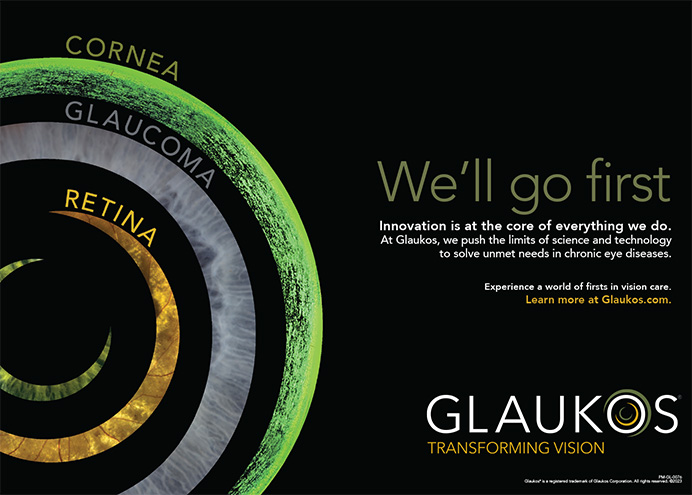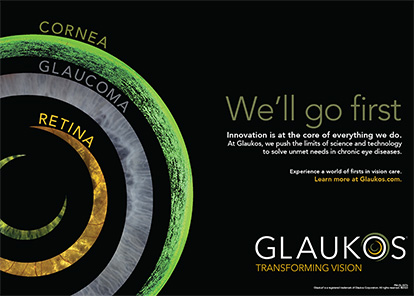Clinical experience with many viscoelastics has led me to choose Healon5 (Pharmacia Corporation, Peapack, NJ) for general use in cataract surgery, rather than reserve it just for difficult cases. The large molecular chain of hyaluronate 2.3% allows this adaptive viscoelastic to change its characteristics when injected. For instance, it can behave like a dispersive viscosurgical device when filling the capsular bag for IOL injection, or it can act as a cohesive viscosurgical device to separate tissue for insertion of the phaco tip.
A cataract surgeon may apply Healon5 at the start of surgery. It is optically clear, and it creates and maintains space within the eye without breaking apart or washing out. In addition, by remaining in the anterior chamber during phacoemulsification, this viscoadaptive protects the endothelium and provides excellent control for difficult cases.
Here are six tips based on my experience for maximizing the benefits of Healon5 during the cataract procedure.
TIP 1: FACILITATE THE CAPSULORHEXIS
Use Healon5 to deepen the anterior chamber for capsulorhexis in order to reduce stress on the capsule and zonules (Figure 1, top). Placing the viscoadaptive on the center of the lens capsule prior to making the capsulorhexis should enable you to push the anterior lens capsule posteriorly and thereby reduce zonular stretching (Figure 1, middle). One caveat: Because Healon5 occupies space so efficiently, it is important not to overfill the anterior chamber with this viscosurgical device. Doing so makes instrument introduction, the creation of the capsulorhexis, hydrodissection, and insertion of the IOL more difficult.
TIP 2: AID PHACO-TIP INSERTION
Place Healon5 under the incisional lip in order to facilitate the insertion of the phaco tip at the start of the phacoemulsification procedure. By occupying space, the viscoadaptive allows the tip to pass without catching the iris, Descemet's membrane, or the incisional lip.
TIP 3: PROTECT THE EYE
Maintain phacoemulsification within the triangle of safety—the portion of the eye that is bordered by the iris margins—and the incisional lip where the chamber is deepest and the tip is safely away from the posterior capsule and the corneal endothelium. During phacoemulsification, insert Healon5 into the center of the anterior chamber in order to separate pieces and keep the cataractous lens in the iris plane and away from the corneal endothelium.
TIP 4: FILL THE BAG
Enlarge and expand the capsular bag for controlled implantation of the IOL. One way to accomplish this step is to fill the capsular bag with Healon (Pharmacia Corporation) and then place a bolus of Healon5 in the center of the capsulorhexis to expand the opening and protect the cornea during IOL injection (Figure 1, bottom).
I do not advocate the exclusive use of Healon5 to fill the bag, because sufficient space must remain to displace the viscoadaptive when the IOL is injected into the lens capsule. The viscoadaptive should be used sparingly. That stated, I have found Healon5 to be ideal for protecting intraocular tissues and for positioning the IOL during implantation.
TIP 5: IMPLANT THE IOL
Control the IOL during implantation via the use of Healon5. It is an excellent addition to clear corneal cataract surgery, particularly with today's single-piece or three-piece silicone or acrylic lenses. It is especially helpful in the implantation of Pharmacia's 911A lens, a process that may be more challenging due to the IOL's design, and it is an ideal companion to Pharmacia's new Tecnis Z-9000 IOL series.
The viscoadaptive also aids the injection of an IOL. Because fluids are noncompressible, inserting the IOL into an overfilled capsular bag can be difficult. Healon5's viscoadaptive properties can be an advantage: The surgeon can place the lens within the injector cartridge with Healon5, and the viscosurgical device will allow movement of the lens down the cartridge barrel without friction or force. By contrast, a cohesive or dispersive would be likely to leak, resulting in a loss of the compressive effect.
TIP 6: REMOVE THE VISCOELASTIC
Insert the I/A cannula into the center of the IOL and visualize the removal of the Healon5. Leaving any viscoelastic in the eye beyond the conclusion of intraocular surgery can lead to a postoperative rise in IOP.
Fortunately, the adaptive nature of Healon5 makes its removal simple. Because the viscoadaptive sticks together, the surgeon can remove it as a single piece. It isn't necessary to irrigate under the IOL or move the I/A tip around to retrieve all of the viscoelastic; it comes out easily with simple I/A, and, because you have placed it only into the capsular opening, the viscoadaptive will remain there until removed.
Wise selection and application of viscoelastics can enable us to improve the outcome and success of microincisional cataract surgery. This new generation of viscoadaptives may be just what the doctor ordered.
Robert M. Kershner, MD, FACS, is Director of the Eye Laser Center in Tucson, Arizona. He may be reached at (520) 797-2020; kershner@eyelasercenter.com


